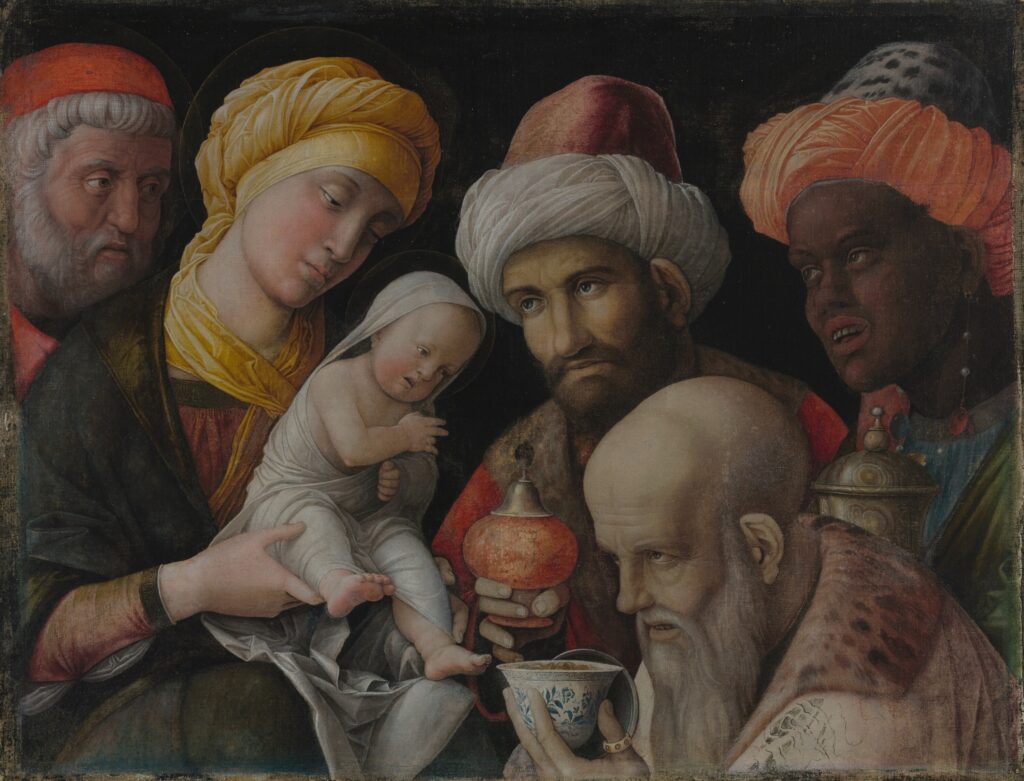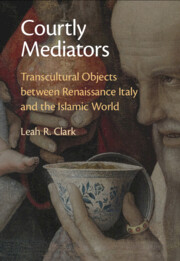How did a large collection of Chinese porcelain end up in a court in Northern Italy in the late fifteenth century?
That was the question that started my book project off. It brought me to various places around the globe, following the potential trajectories of the Chinese porcelain that was recorded in a 1493 inventory of Duchess Eleonora d’Aragona of Ferrara. The Medici of Florence have long been heralded as the largest collectors of Chinese porcelain in fifteenth-century Europe, but the list of Chinese porcelain in Eleonora d’Aragona’s inventory puts that into question. The first representations of Chinese porcelain also appear c. 1500 in paintings associated with the court of Ferrara and nearby Mantua (Figures 1 and 2). So how did it get there?


Eleonora d’Aragona was born in Naples, a large kingdom that took up most of the south of Italy in the fifteenth century. Her family ruled Naples but her grandfather, King Alfonso d’Aragona had come from Aragon, in Spain. Naples has long been neglected in art historical scholarship because of its heterogenous nature; it doesn’t conform to art historical narratives of homogenous styles such as those of Florence under the Medici. What became clear in my research is that this heterogeneity fostered cosmopolitanism. My archival research revealed that Naples in the fifteenth century was a site of diplomatic exchanges and cultural encounters, where ambassadors from important empires around the Mediterranean such as the Ottomans (what is today Turkey) and the Mamluks (what is today Syria and North Africa) resided for months at a time. How did that contribute to the artistic culture of the city and further afield?
Naples was a site of diplomatic gift exchange, where beautifully crafted Mamluk metalware full of aromatics and spices as well as Chinese porcelain were gifted to broker sometimes rather fraught relations over issues such as piracy, territorial struggles, and trade. Chinese porcelain travelled along the silk roads ending up in large quantities at the Topkapı Palace in Istanbul, where it was sometimes gifted to European states. The Mamluks had monopoly over the spice trade and acquired Chinese porcelain through trade and diplomacy, and similarly to the Ottomans, gifted porcelain to Europeans as a means of brokering trade relations.
Eleonora d’Aragona likely received some of her porcelain as diplomatic gifts and she likely brought a large quantity up to Ferrara as she made her way up north on her public bridal procession. In Ferrara she built up a large and varied collection, patronising local artists as well as collecting a global range of goods. These collecting practices influenced her children, including the famous collectors of the next generation: Alfonso and Isabella d’Este. The ceramic and metal objects making their way into Italy had a bearing on local production and collecting tastes. Some Chinese porcelain was framed in special mounts by Italian goldsmiths, creating composite objects, while the motifs on metalwork and porcelain often described by contemporaries as ‘moresca’ or ‘damascena’ (moresque or damascene) were mimicked by Italian artists across media, from leather binding on books to ceramics and metalware. Collectors actively sought objects with far-reaching provenances for their rarity and the technological dexterity that went into producing them. How porcelain was made was a mystery to Europeans, and many believed the material to be magical, sometimes used to ward off poison. Alfonso d’Este would go on to try to make his own counterfeit porcelain in the sixteenth century, and his and Isabella d’Este’s collections likely showcased the porcelain inherited from their mother, Eleonora. They were certainly eager to represent this porcelain in the paintings they commissioned by some of the best artists of their time: Giovanni Bellini and Andrea Mantegna.
Discovering Chinese porcelain in the 1493 inventory of Eleonora d’Aragona, as my book shows, allows us to look at the Italian Renaissance and its collecting practices from the perspective of trade, diplomacy and global encounters and it forces us to ask new questions of a culture we thought we knew so well.

Latest Comments
Have your say!